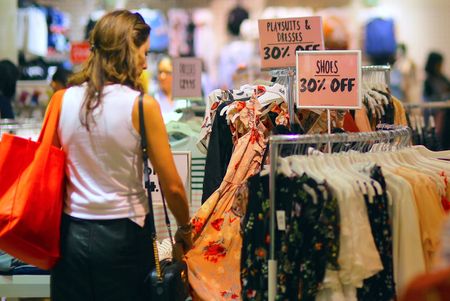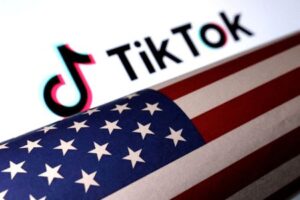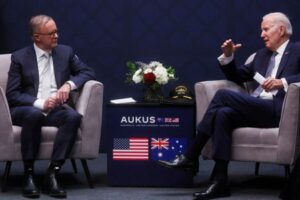By Stella Qiu
SYDNEY (Reuters) -Australian consumer price inflation unexpectedly picked up to a five-month high in April due in part to increases in petrol, health and holiday costs, bolstering expectations that interest rates would not be lowered any time soon.
Data from the Australian Bureau of Statistics on Wednesday showed its monthly consumer price index (CPI) rose at an annual pace of 3.6% in April, up from 3.5% in March and above market forecasts of 3.4%.
Moreover, a closely watched measure of core inflation, the trimmed mean, also accelerated to an annual 4.1%, from 4.0%. The CPI excluding volatile items and holiday travel stayed at an annual 4.1%.
However, market reaction was rather muted. The Australian dollar rose just 0.1% to $0.6657 and the three-year bond futures fell another 2 ticks to 95.93, having already tumbled earlier in the day thanks to the overnight moves in Treasuries.
Swaps slightly increased the chance of a quarter-point hike in September to 20% from 12%, while doubling down on their bets that any rate cut would not come until August or September next year, some 15 months away.
Economists’ consensus, however, is for the RBA to begin its easing cycle in the fourth quarter.
“This was not just “one of those statistical flukes” caused by a big surge in one or two components due to seasonal distortions or supply interruptions,” said Robert Carnell, regional head of research, Asia-Pacific, at ING.
Carnell abandoned his call for one rate cut this year after the data.
“What we do for 2025 remains an open question. For now, we will maintain the 50bp of easing we had been expecting. But we would be dishonest if we did not consider that the risks have shifted to the possibility of some further RBA tightening.”
Complicating matters for policymakers, the April report is heavily skewed towards goods in the first month of the quarter and do not capture price changes for a range of services, which tend to be sticky.
HIGH BAR
However, analysts say the bar to a hike remains high.
The Reserve Bank of Australia has already expressed a willingness to avoid “excessively fine-tuning” policy even as the central bank judged the risks to inflation had risen somewhat recently after a surprisingly strong first quarter CPI report.
The RBA expects headline inflation to pick up to 3.8% by June this year, but the hope is that the new relief from the government – including billions in electricity rebates and rent subsidies – would help ease the cost-of-living pressures in the second half.
Still, the additional stimulus from the government could also risk adding to spending and inflation.
“All that will ensure the RBA stays put for a little longer; its next move will be down — but we’ll have to wait a little longer,” said Moody’s Analytics economist Harry Murphy Cruise, who is forecasting a 25-basis-point cut in December.
For April alone, CPI rose 0.7% from the previous month, driven by a 4% jump in prices for clothing and footwear and a 2% increase in health costs.
Holiday travel and accommodation prices rose 4.6%, the first monthly rise this year due to high demand for international travel over the Easter and school holiday periods.
The RBA has raised interest rates by 425 basis points since May 2022 to a 12-year top of 4.35%, but steadied its hand for four straight meetings since its last hike in November as cautious consumers scaled back their spending and the economy slowed to a crawl.
It has kept markets somewhat on edge, however, by not ruling in or out any changes in policy.
(Reporting by Stella Qiu and Wayne Cole; Editing by Tom Hogue and Shri Navaratnam)





